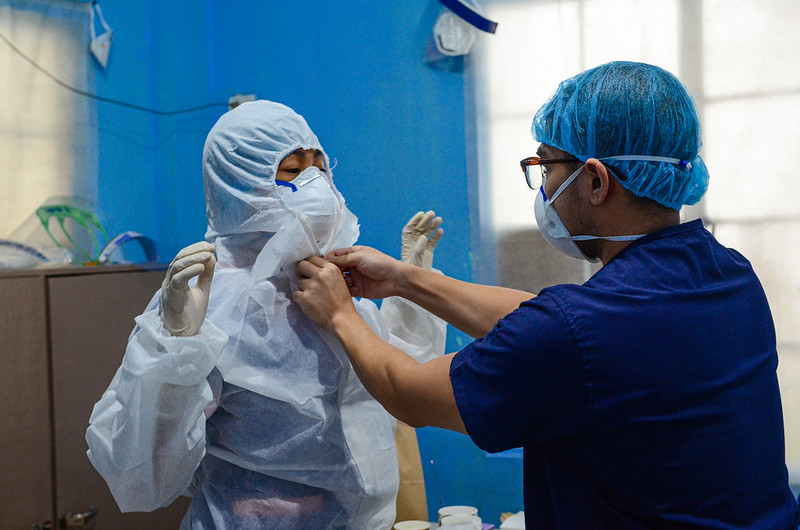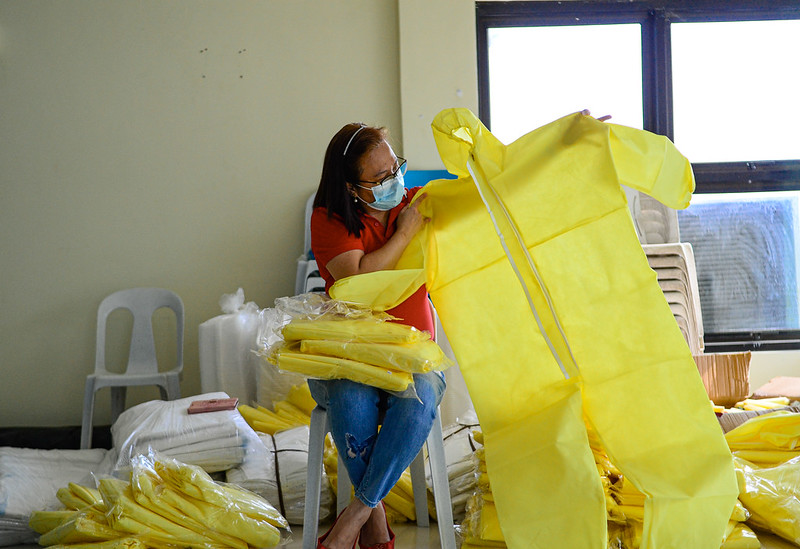
Across the country, women occupy the vast majority of roles deemed essential to the coronavirus crisis response.
According to The New York Times:
“From the cashier to the emergency room nurse to the drugstore pharmacist to the home health aide taking the bus to check on her older client, the soldier on the front lines of the current national emergency is most likely a woman.”
One key commonality is the need for adequate safety gear. By now, we’re all too fluent in the vernacular of PPE—personal protective equipment—and its importance in shielding those who risk exposure to COVID-19.
But what happens when PPE is treated as a “one-size-fits-all” proposition? And when the default is the body and experience of a cisgender male? Two recent news stories highlight the dangers.
Menstrual Products as Part of PPE
First, is the often overlooked consideration of menstrual products as part of the PPE package.
Back when hospitalizations peaked in China’s Hubei province, medical providers there spoke out about the challenge of working long shifts in full-body protective jumpsuits while managing their periods. Many made complaints to officials about the dearth of readily available menstrual products and infrequent bathroom breaks—only to be met with derision. Some were chided that they “lacked the spirit of devotion.”
A nightmarish response ensued when a hospital in Shanghai announced it would donate hormonal birth control pills to suppress menstruation—as its leaders put it, to “postpone female team members’ ‘unspeakable’ special periods.”
Finally, a viral social media post shared on a local site spurred a much-needed supply of donated pads, tampons, period underwear and even adult diapers.
Weeks later, another cohort posed a similar need—actual front lines soldiers. Of the nearly 5,000 members of the U.S. Navy on board the USS Theodore Roosevelt, the aircraft carrier hit with coronavirus, approximately one thousand are women. The Washington, D.C.-based nonprofit I Support the Girls was summoned to provide an emergency donation of tampons and pads for these sailors, after being flagged that many were left high and dry during quarantine with limited access to these and other essential hygiene products.
Periods should never be cause for shame or deprivation of bodily autonomy and integrity. At a minimum, governments must ensure that those they employ to do crucial work on the front lines are able to readily manage normal bodily functions—including menstruation. Donation drives filled an emergency gap in both of these scenarios but are no substitute for public and policy interventions.
PPE Treats Men’s Bodies as the Default
And second is rising awareness that standardized PPE itself is not constructed for all bodies, either. Unisex gear often is made for the male physique.

A recent Refinery 29 report shed light on this problem among British health providers. Although the Department of Health announced that its PPE kits of gloves, masks, gowns and visors were designed to protect “both genders,” much of it has proved ineffective—and too big for many of the women who make up 77 percent of the NHS workforce. One surgeon observed that the (ill-fitting) mask she received came in a box that featured a man’s face; a Guardian headline blared, “PPE is designed for a 6-foot 3-inch bloke built like a rugby player.”
It is not hard to see how this poses significant, even life-threatening harm—not only to the legions of women forced to don gear that wasn’t made to fit, but also those whom they serve and encounter, from vulnerable patients to the public at large.
And the solution should be stunningly simple: Right-size the PPE, acknowledge the reality and array of women’s bodies and lose the assumption that men are the default.
This is the argument at the heart of Caroline Criado-Perez’s extraordinary book, Invisible Women: Exposing Data Bias in a World Designed for Men. In it, she addresses PPE in particular:
“Respiratory protective equipment is designed for a male face, and if it doesn’t fit, it won’t protect.”
It is 2020 and women simply no longer can be treated as ‘the other’—not ever, and surely not when occupying crucial positions to save us in crisis, while simultaneously bearing the brunt of its toll.
There are myriad ways that the global pandemic exacerbates gender inequality. Let’s be sure that the size, shape and function of our bodies is not one of them.





